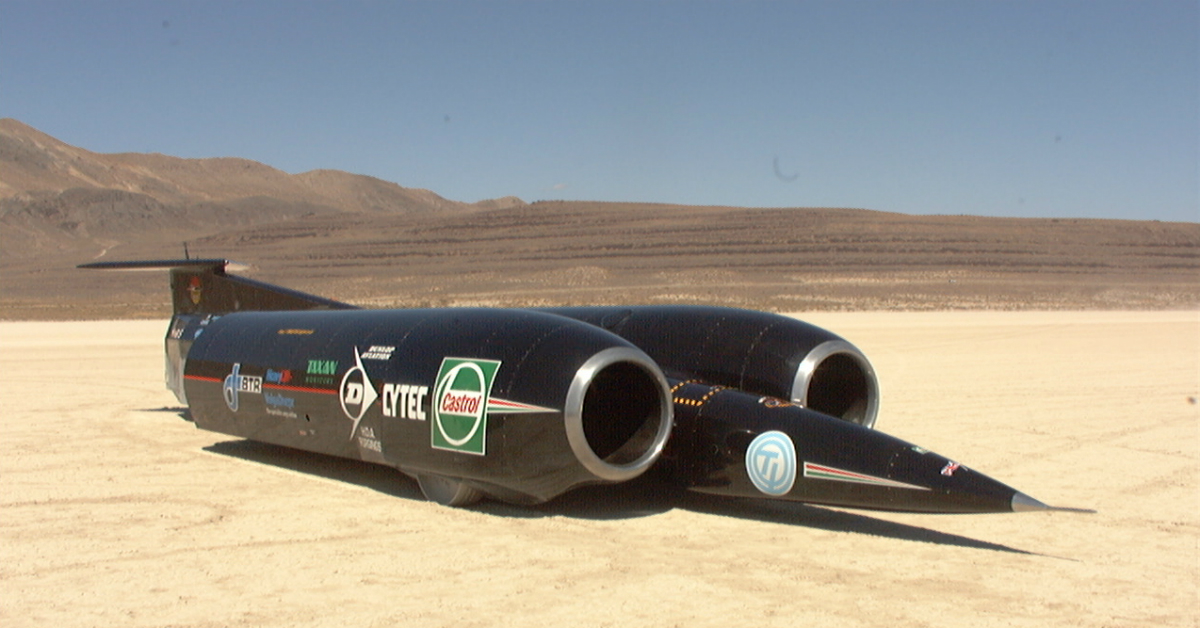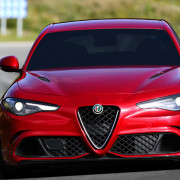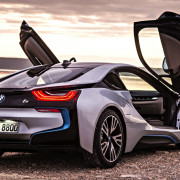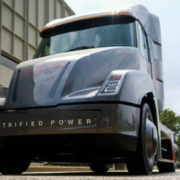British engineers are at it again working on yet another car that will be built to break the current land speed record of 763 mph. Starting out almost 100 year ago when Lydston Hornsted’s Benz No. 3 broke the record to achieve 124 mph the current land speed record holder Andy Green achieved the 763 mph mark in 1997 in his Thrust SSC. The engineers behind the Thrust are working on a new Bloodhound SSC with a self-imposed deadline of 2016 to make and run the Bloodhound SSC and have it reach speeds that reach or exceed 1,000 mph. In order to facilitate this record breaking attempt, a track has been built in Hakskeen Pan in South Africa that is twelve miles long and two miles wide.
Even though the company currently holds the land speed record using the Thrust SSC, their hope is that building the Bloodhound SSC will help to inspire and promote a new generation of British engineers and scientists to continue the rich and lengthy legacy of British Engineering that has been enjoyed by many for decades.
One of the major challenges facing Ron Ayers and Richard Noble, the brains behind the Thrust SSC and primary think tank for the Bloodhound SSC, is keeping the car on the ground. This is especially challenging because cars that travel at the speeds desired are likely to attempt to take off like and airplane. In fact, a typical passenger car can take off when speeds of around 150 mph are achieved. With a goal to achieve speeds at or above 1,000 mph the aerodynamics are all too important to help ensure the car does not take flight, but instead experiences enough down force to keep it glued to the ground.
Another factor to consider is the engine that will be used. In the early part of the century the records were actually achieved in electric powered cars, much of the rest of the first half of the century, up to the speed record being set at 400 mph, was accomplished using piston engine driven cars. In order to go beyond those limitations, engineers turned to jet engines and rockets to propel the vehicles that are built to break these land speed records and even though the record kept being broken, eventually air resistance became a major factor to contend with.
To help solve the problem of aerodynamics for this kind of testing and development the company has turned to supercomputers and their ability to create a virtual wind tunnel and create the absolute most accurate numbers without having to test drive cars and have any brave souls enter cars with the possibility of not returning. This type of testing was required in the advent of the desire to break land speed records, and actual wind tunnels had to be built to perform the tests, thankfully, technology has come along in such a way to allow for fully digitized testing and calibrations to help make this a much safer and better process.
So far in testing, the problem that has been present has been keeping the rear of the car on the ground. The nose of the car has performed very well so far well as long as the nose height was just right it has been basically lift neutral while the strong shock waves generated by the outboard rear wheels and suspension have caused the rear to lift. This rear lifting, that was not anticipated, caused the team to perform and six-moth aerodynamics study for rear suspension optimization and has resulted in the “delta fairing” design. This design protects the base and underside from the high-pressure cushion that is created on the rear wheel when the car overcomes the sound speed barrier. Without this “delta fairing” design, the Bloodhound was lifting from the ground when the speed reached 90% of the speed of sound, which was seen on Campbell’s vehicle in 1967. This “delta fairing” design was recently published in the Journal of Automobile Engineering for interested parties to learn more about this unique design.
Originally designed to use a split dual intake, the difficulty in delivering enough fuel to the jet engine the team had to revert back to a single intake that is mounted above the cockpit canopy. Add to this the unknown factor of stability and this challenge quickly became one of continuous problem solving.
Attempting a varying range of designs, the team continually tried to different configurations for which the supercomputer would offer aerodynamic results that seem to baffle the team each time they were returned. The answer of would they even be able to reach 1,000 mph seemed to be almost ridiculously impossible to solve as the team was unsure why the computer was rejecting their designs for the shape of the car.
After a multitude of attempts, a basic shape has emerged for the car that expected to reach 1,000 mph or more and the changes have become predicable for the team to work with and continually improve the overall look. Currently the car appears almost jet plane in shape with a pointed nose, and a scoop through the front to aid in down force as well as wings and fins that aid in the stabilization of the vehicle.
The team is poised to test the Bloodhound SSC sometime in 2015 and expects when a real time test occurs new and unique aerodynamics and power questions might arise to challenge their expertise once again. One thing is for sure, they are ready for just about anything the Bloodhound SSC can throw at them and are looking forward to tackling another set of challenges with this land speed record date looming on the horizon in 2016.
It will be extremely interesting to see if this team is able to achieve their goal to set a brand new land speed record that reaches four digits at 1,000 mph or greater. Once this is attempted, and hopefully accomplished, what might be on the horizon next for these British Engineers, or will this finally be the pinnacle of their career as designers, engineers, and overall speed demons. Only time will tell, but for now we all sit and wait to find out if the land speed record can really reach the 1,000 mph target.




